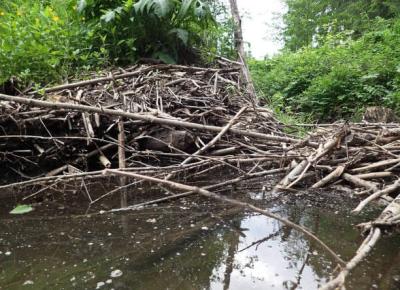Cultural Safety and No-Go Belief Systems Meant Storm Severity, Clouded Response
An official single-issue focus on forestry in order to conform to an international climatic regime blinded regulators to the compounding threat of logging leaving in its wake mounds of debris to be washed away in bridge-busting waves.
Since it took office over five years ago climate has been the proclaimed centrepiece of all the Labour government’s objectives and along with it forestry as the instrument of sequestration and related offsets.
It was the “tool” of the nation being on the “right side of history.”
Mesmerised by the climatic taboo surrounding forestry a community of interest refrained from inquiring why the practice of removing all the tree components such as branches mandatory in other nations was ignored in New Zealand.
Commentators imbued with reverence for anything to do with forestry voiced concern over the heaps of timber debris building up on beaches, yet ignored the effect of the hinterland detritus, tailings, stockpiles in the event of flooding.
By the same token unquestioned cultural ideals imposed on wider emergency handling hampered the initial response to Cyclone Gabrielle when it initially broke on the Auckland conurbation.
An official and exhaustive and long-running review of the umbrella civil defence agency known as Fire and Emergency New Zealand (FENZ) ignored operational effectiveness.
It concentrated instead on what was described as “workplace culture.”
It was not focussed on the ability of the organisation to respond in operational terms to catastrophic events such as those inflicted by Cyclone Gabrielle.
Instead the attenuated review procedure delved into what was described as personnel “behaviours,” and especially into “bullying.”
The Auckland initial uncertain chain of command and ill-defined areas of responsibility coupled with an emphasis on holidays may one day be attributed to this priority given to the sociological rather than operational performance of the first-reaction emergency structure.
An obstacle to a lucid assessment of the effects of Cyclone Gabrielle will be the inability of the politico media sphere to climb down from its hallowed ideological imperatives.
The approval of housing estates on low-lying land has long been considered a known risk yet one worth taking.
Yet the ideological version of the extension of this in the form of the official encouragement to build industrial generating sites on flood plains now seriously requires questioning.
One example is the Helensville, Auckland, solar generating plant scheduled to be built on a neighbouring town dairy farm site which now demonstrably after two inundations in two years lies on an active river bed in the form of the Kaipara River estuary.
Similar large scale solar sites are planned for low-lying flood zones in the Wairarapa Valley.
In the doctrinal drive to meet international approval with such vulnerable showpiece sites there are now demonstrably being ignored the all-too-visible and present dangers posed by floods.
The series of government reviews on the Fire and Emergency sector’s sociological behaviour continued until right up to the advent of Cyclone Gabrielle.
The government for the past five years has strained all its ample communications sinews to warn of climate change and this has been echoed by its compliant media outlet chorus.
Yet in practical and operational terms the threat was treated as a long term one curable by variations in human behaviour in certain countries.
In the event and as the Nelson floods among other auguries indicated it was a short to medium term one. Imminent in fact.
Tangible evidence of the diffusion into sociological doctrines of natural disaster emergency management was evident by for example the determination of officials throughout the cyclone and its aftermath to inject in for government policy diversity’s sake linguistic words and nomenclature not immediately understood by the population as a whole.
An obvious recommendation is that in any real emergency the words used to describe any situation are the words that are understood by the bulk of the people listening to them.
The government and its bureaucracy preach that hostile weather “events” are on the increase.
The lesson of Cyclone Gabrielle indicates measures to be taken to ensure that the velocity of official belief systems is firewalled from the spheres of risk assessment and the parallel emergency management structure.
A separation of cultural and operational powers, in other words.

